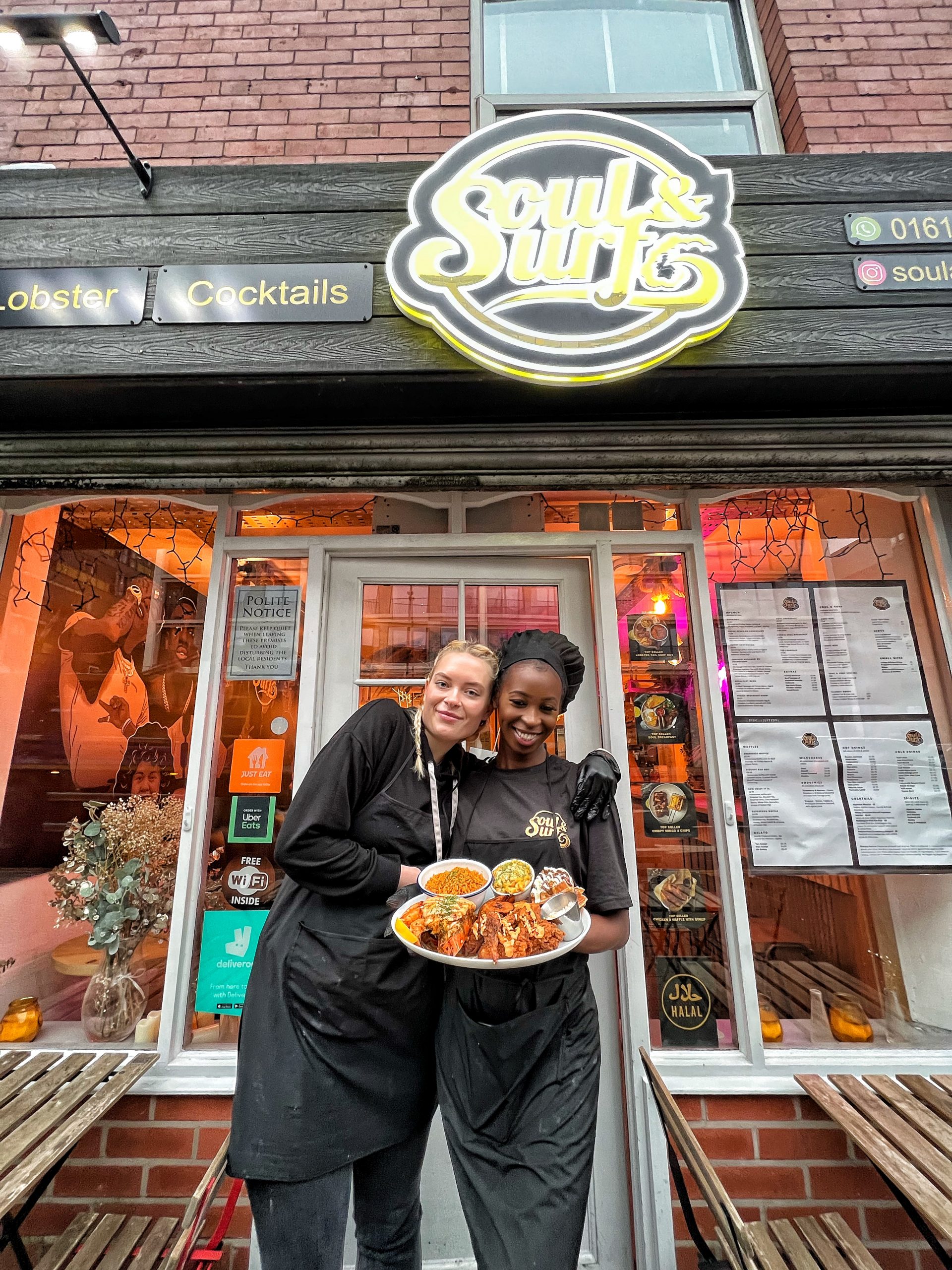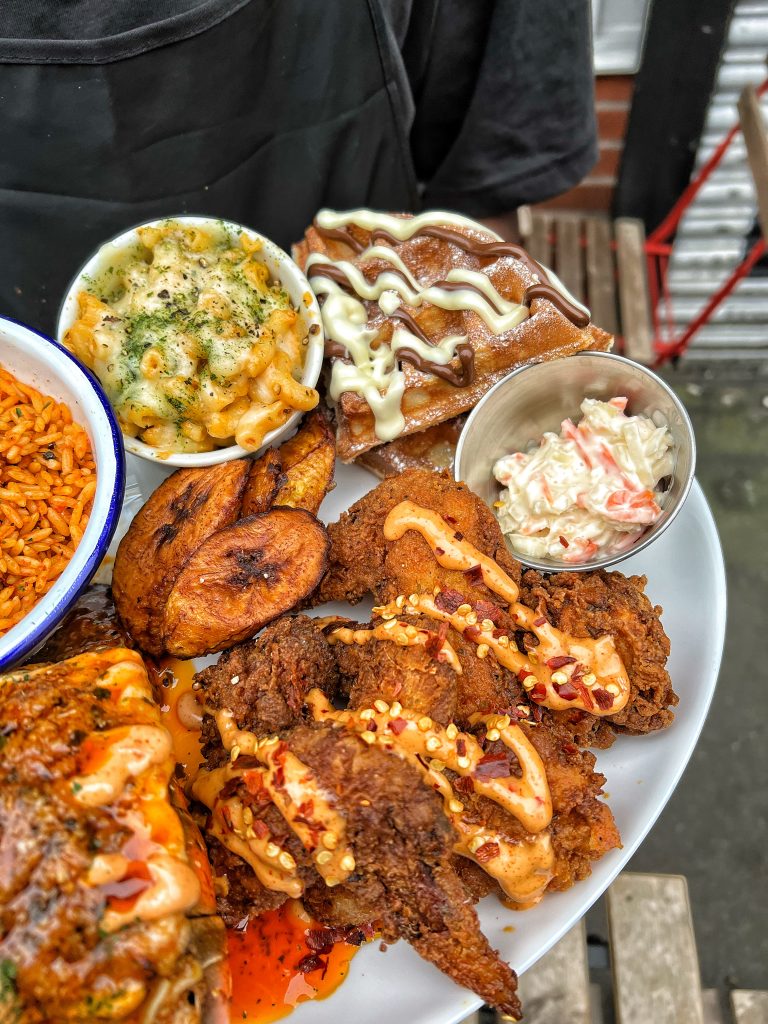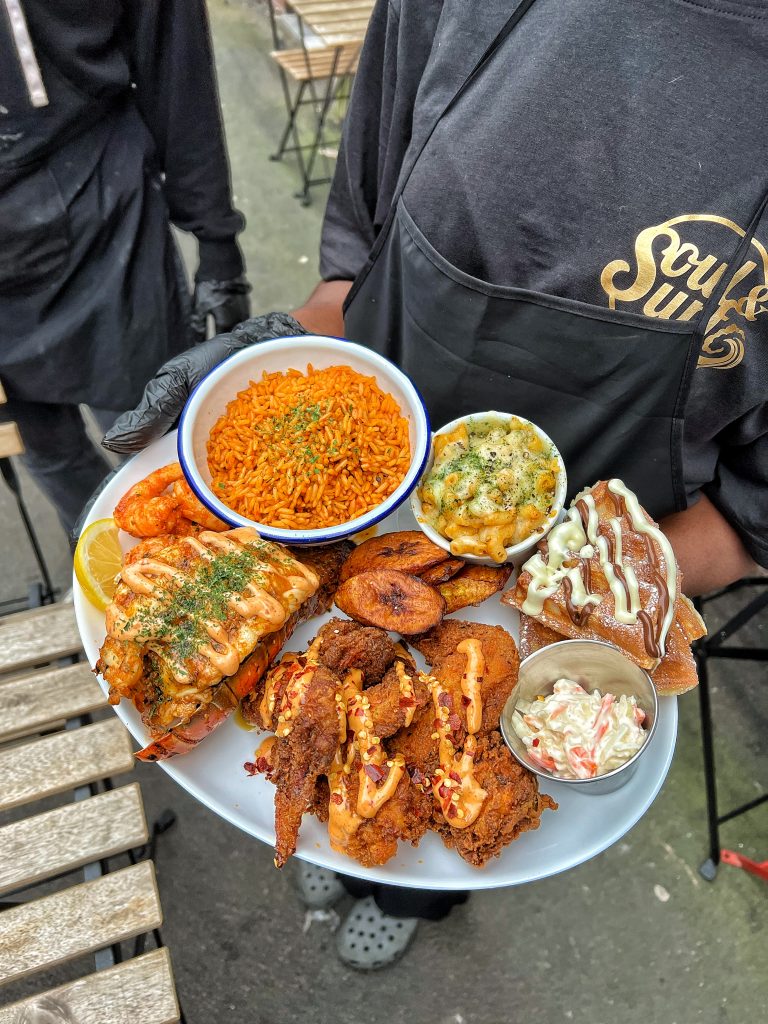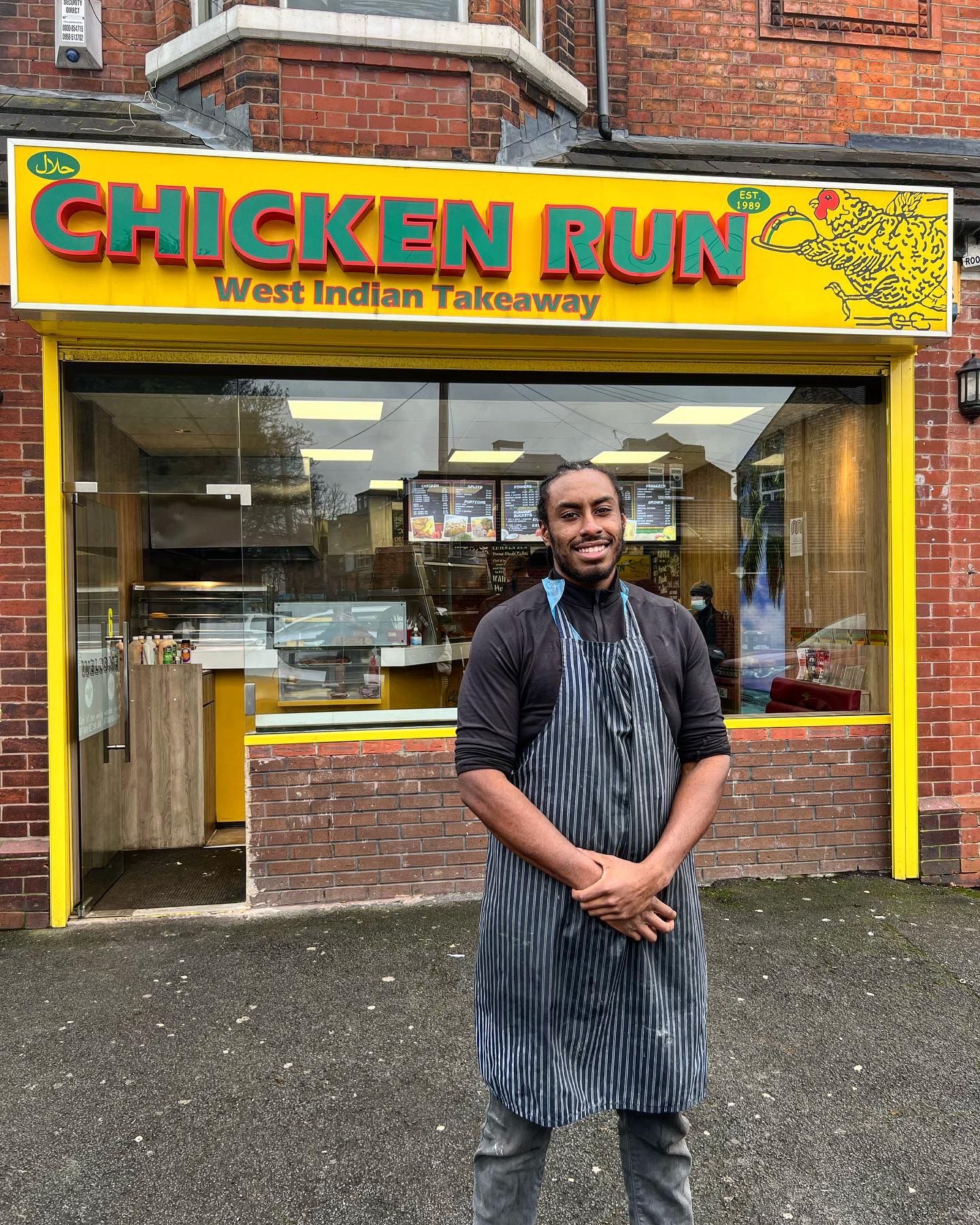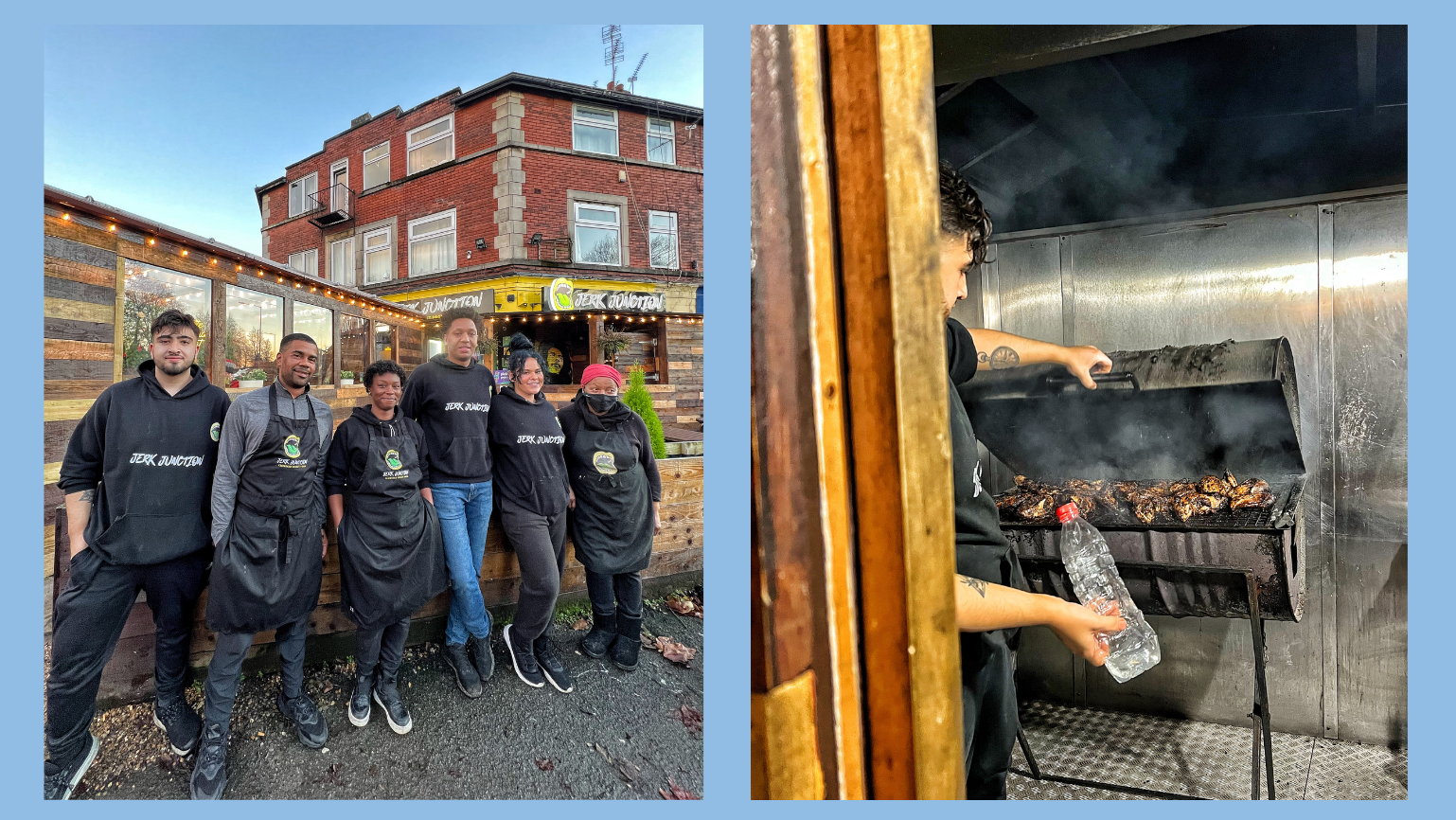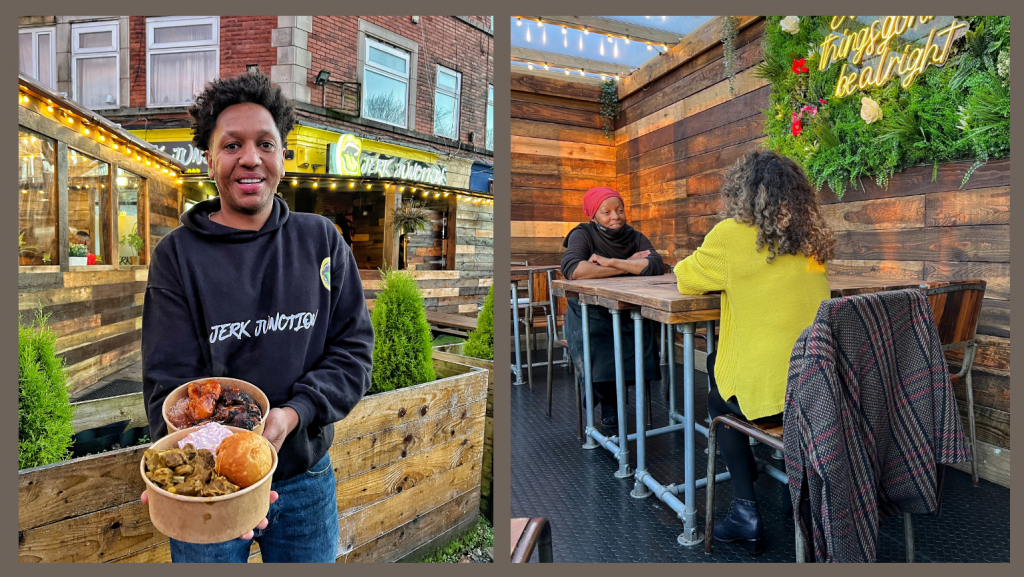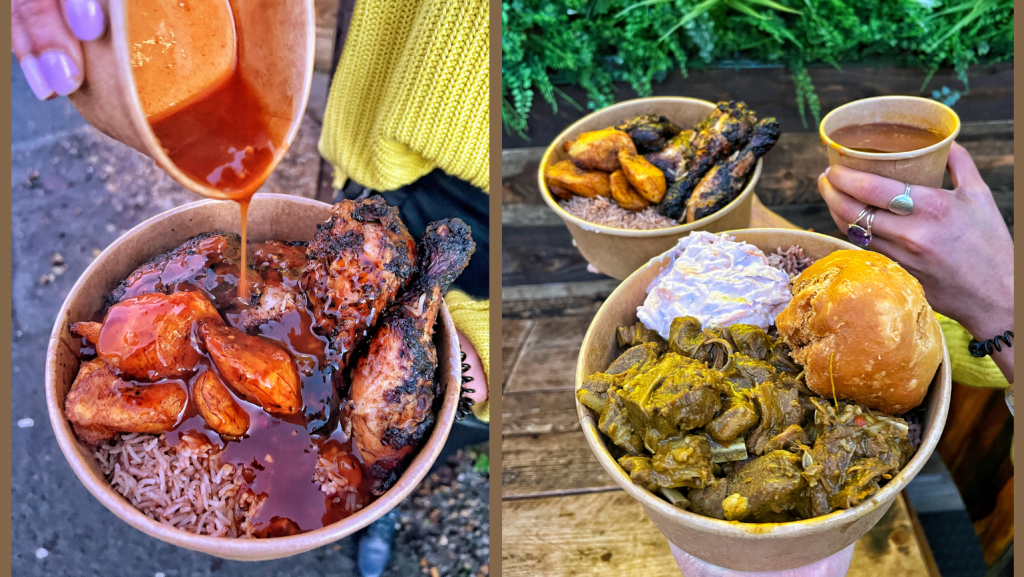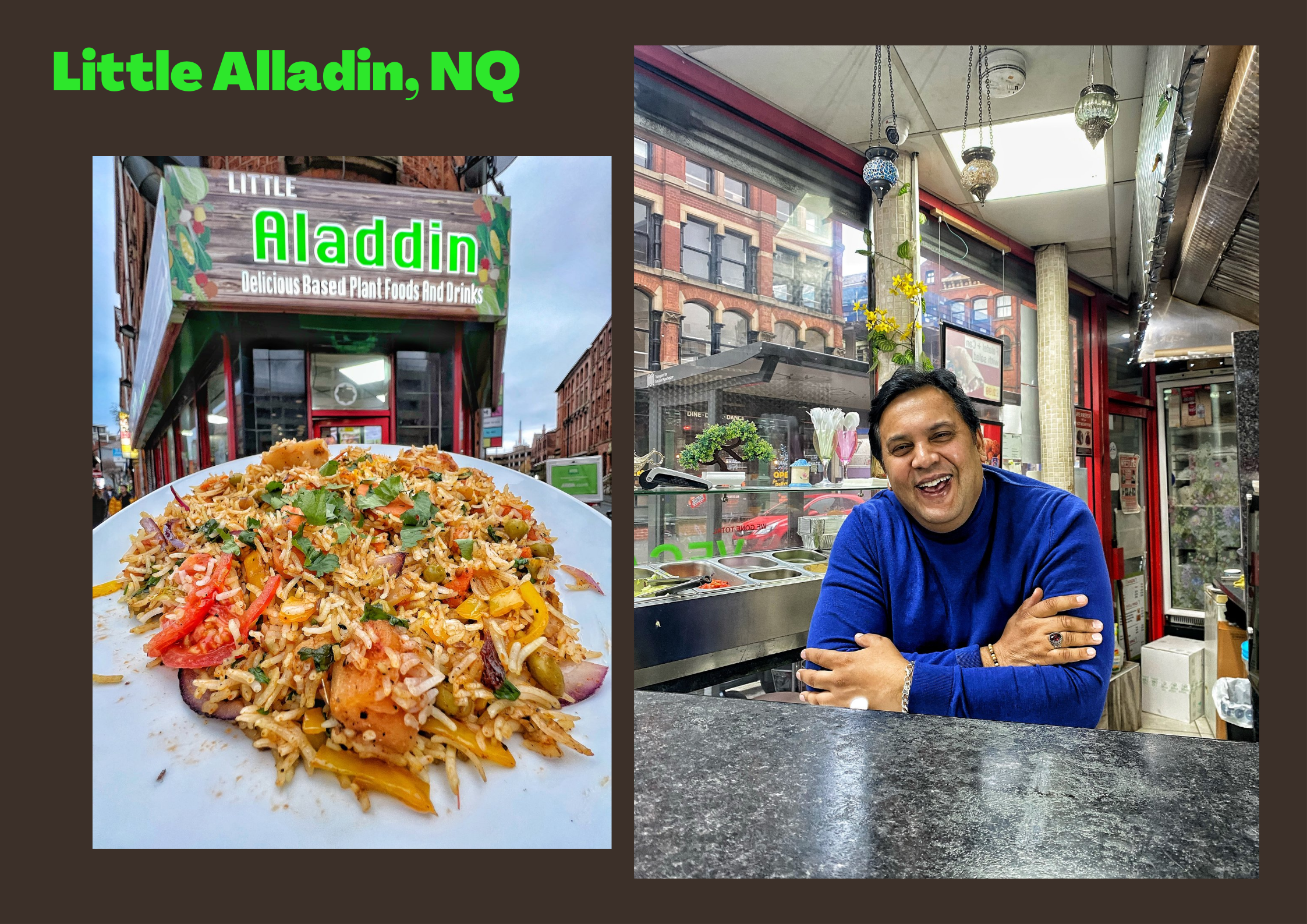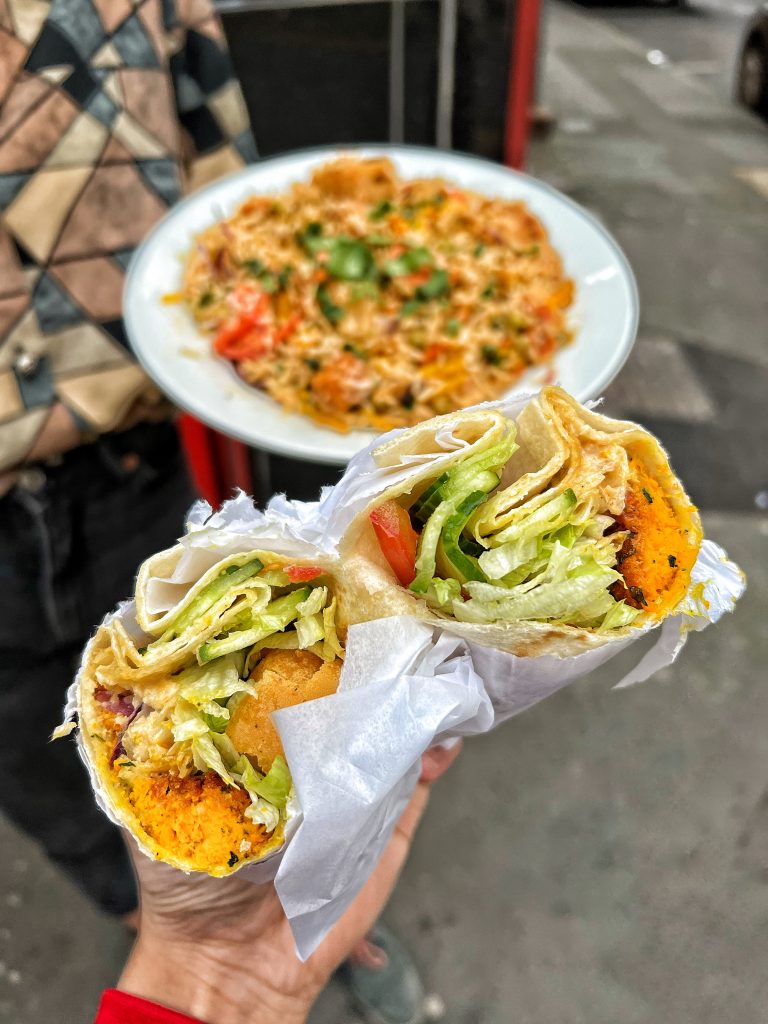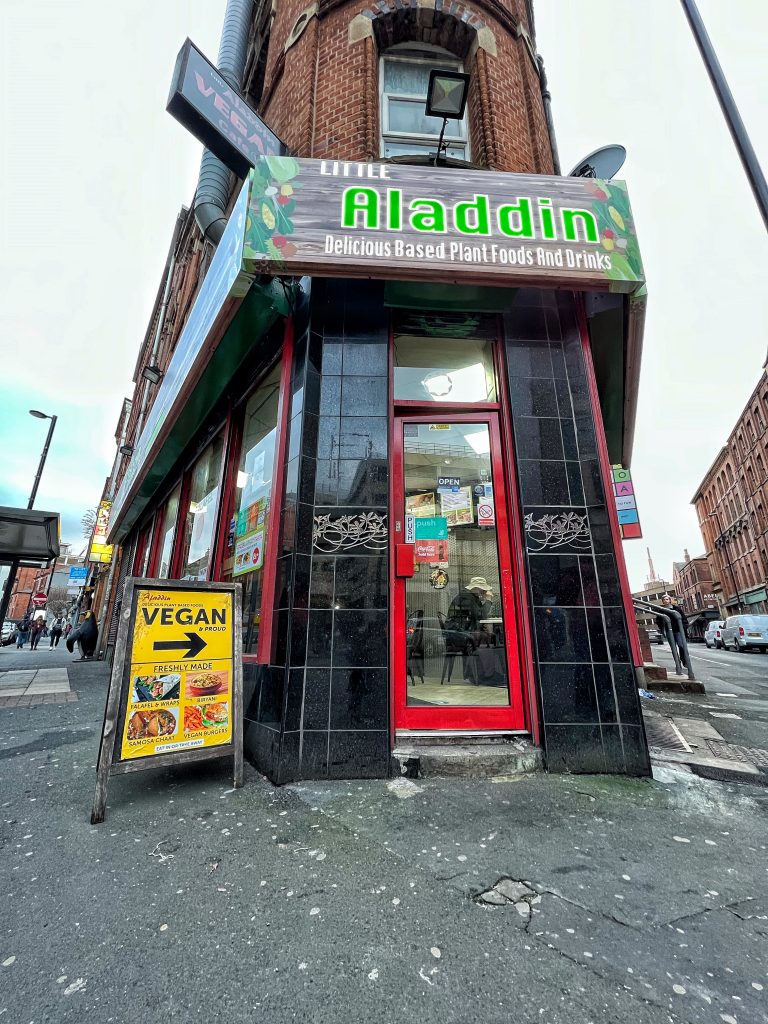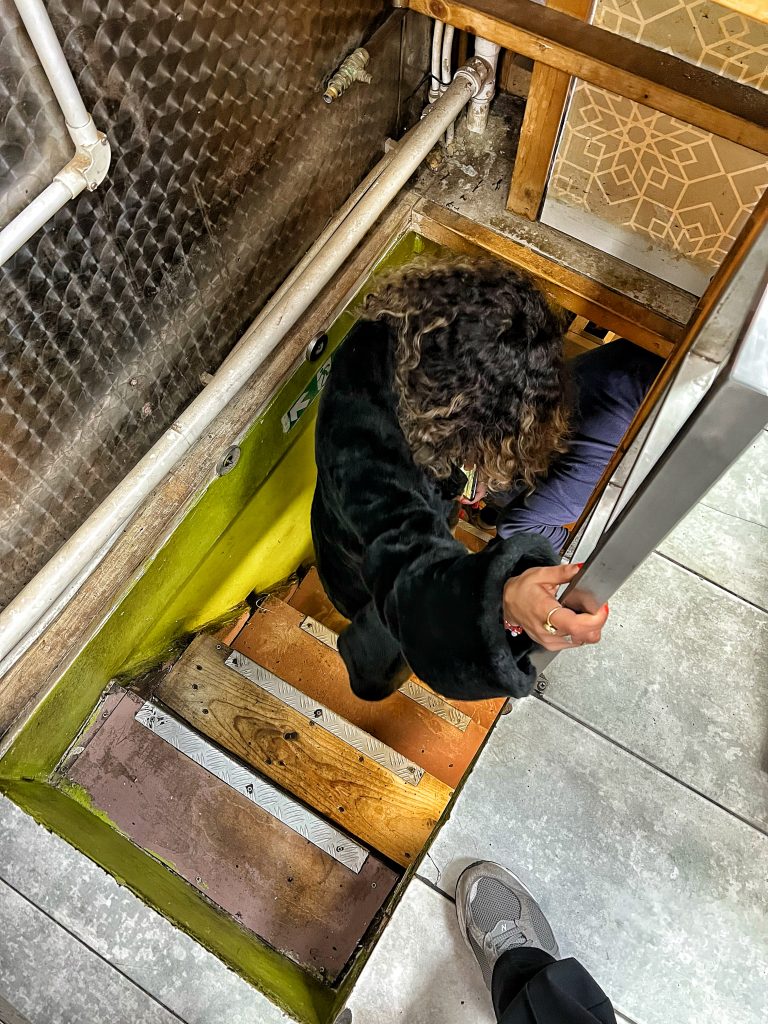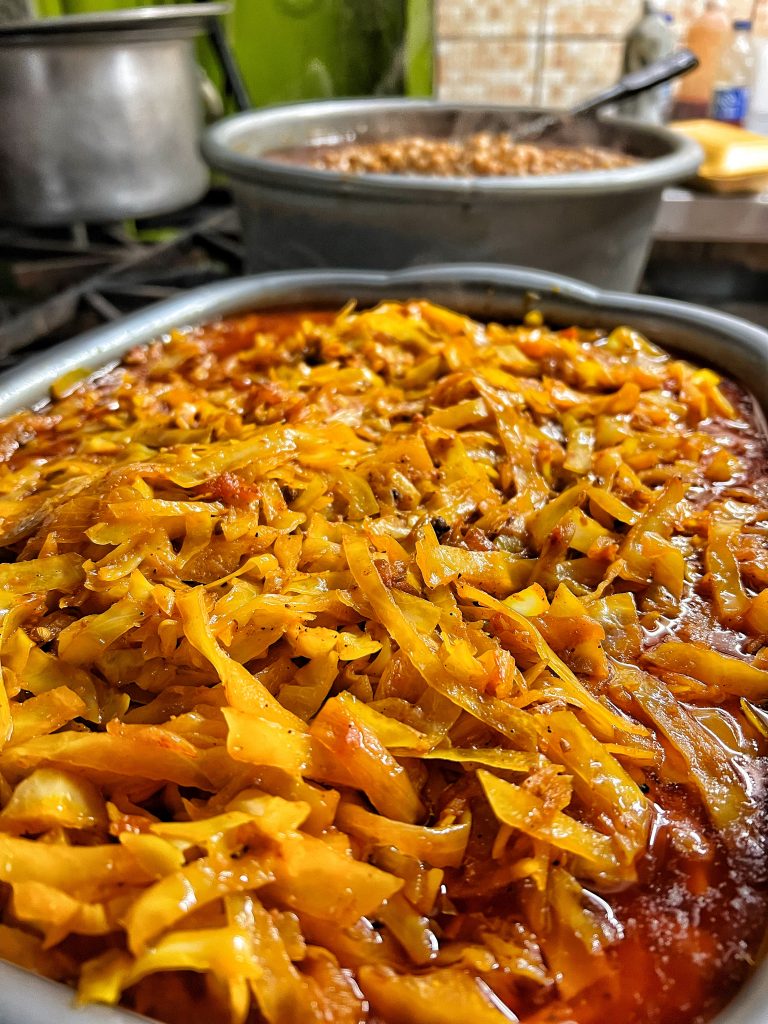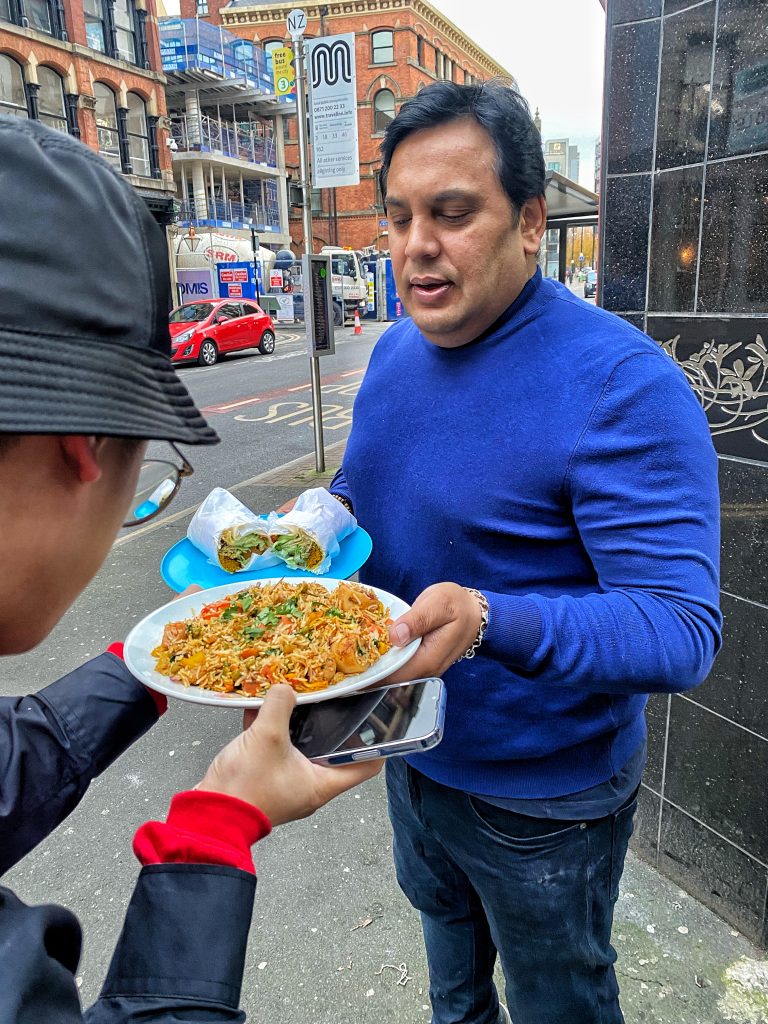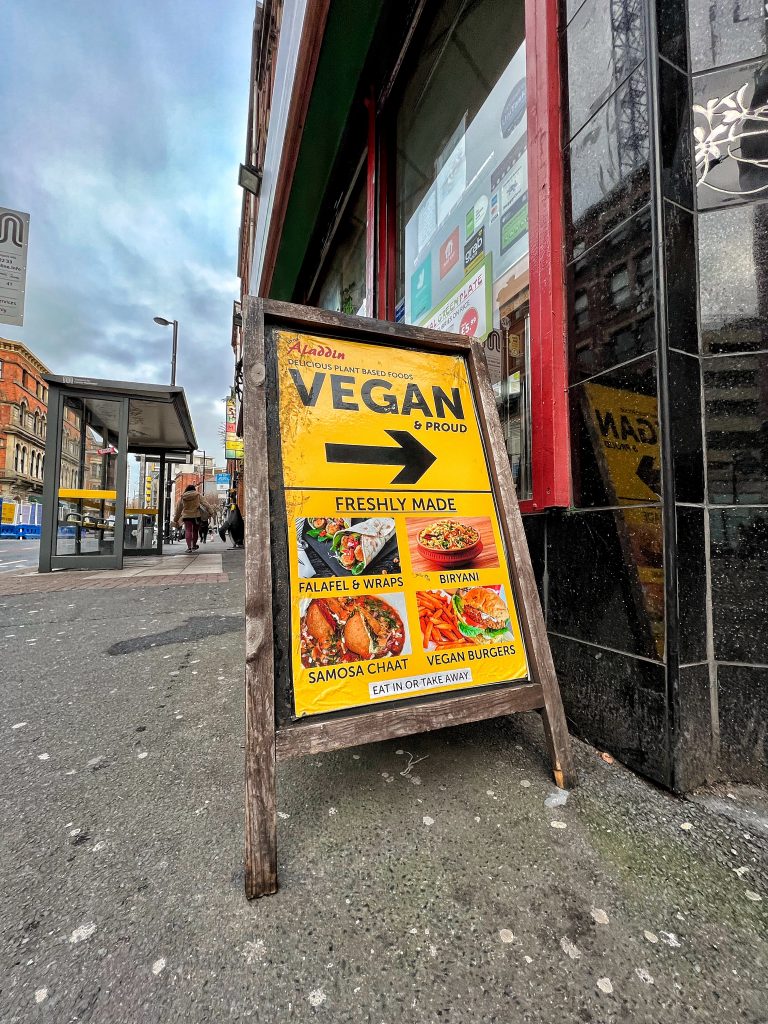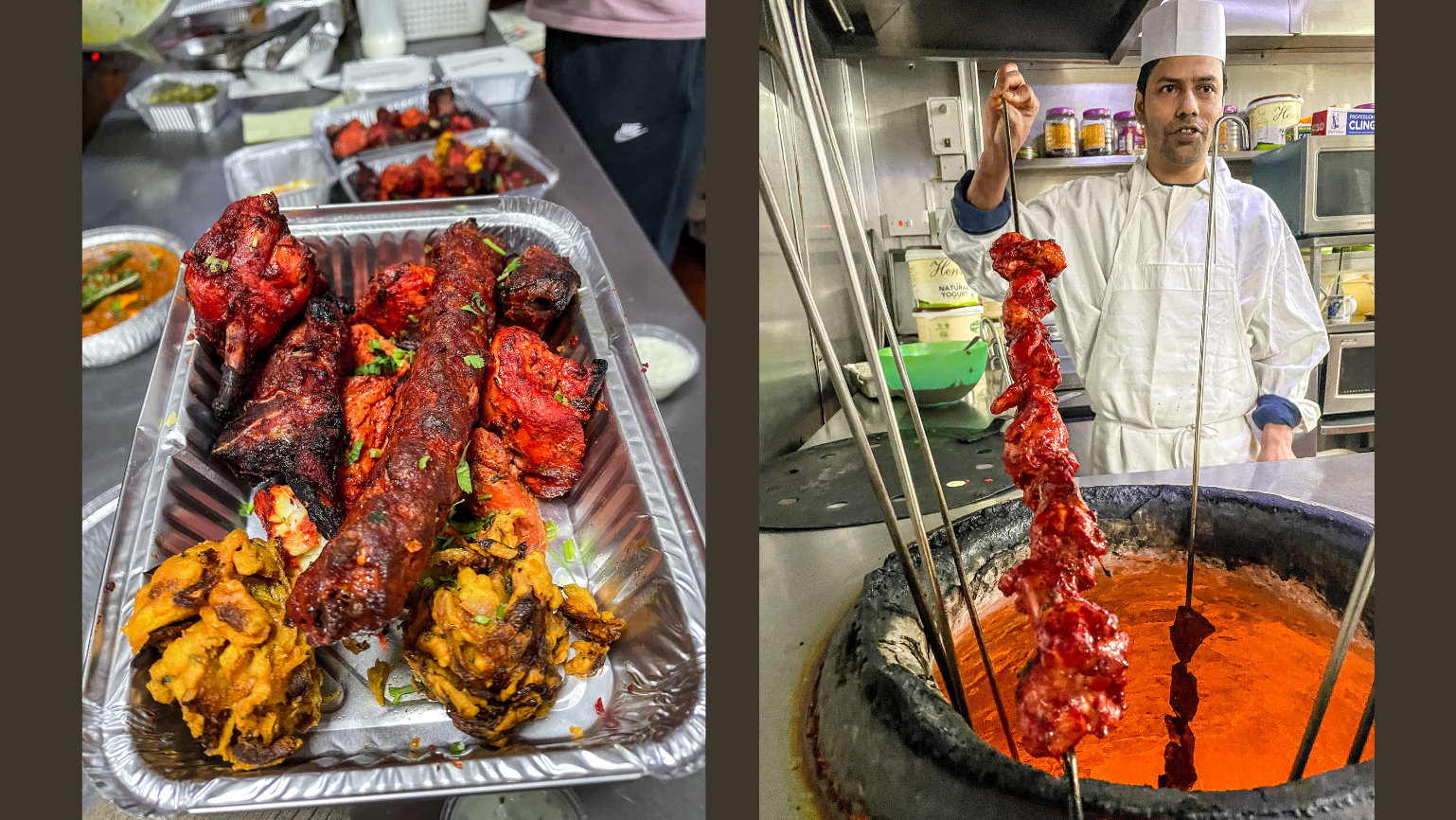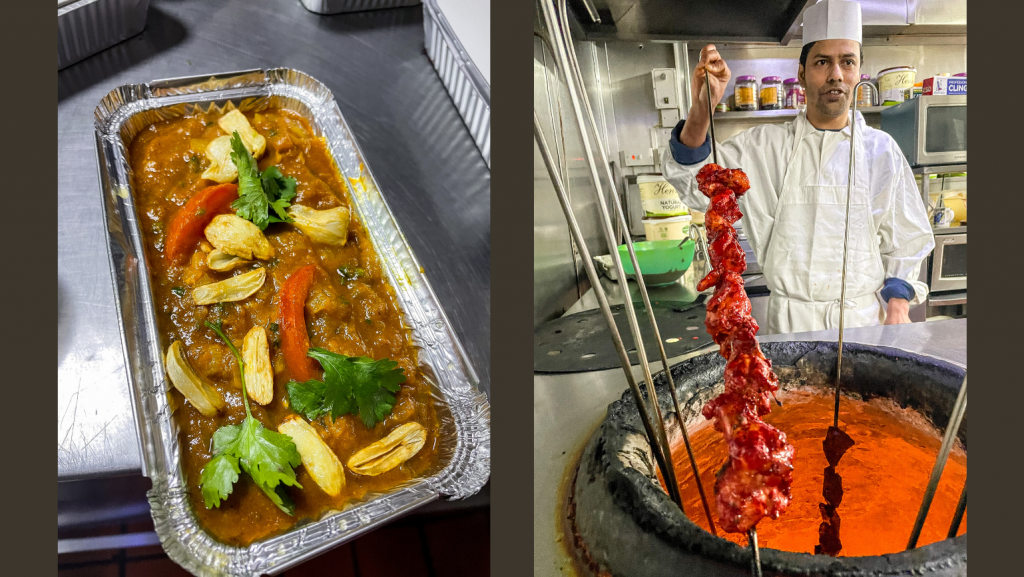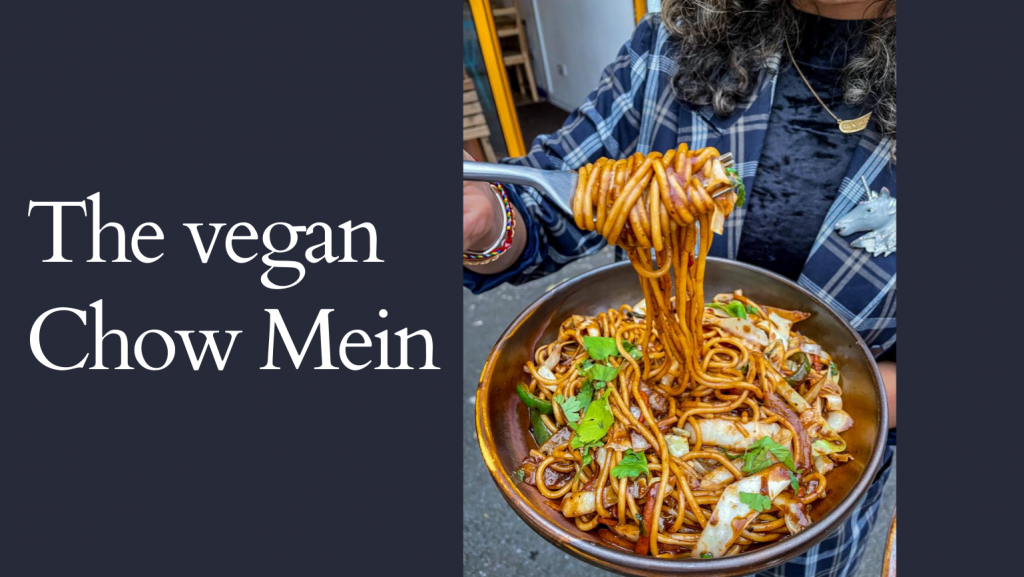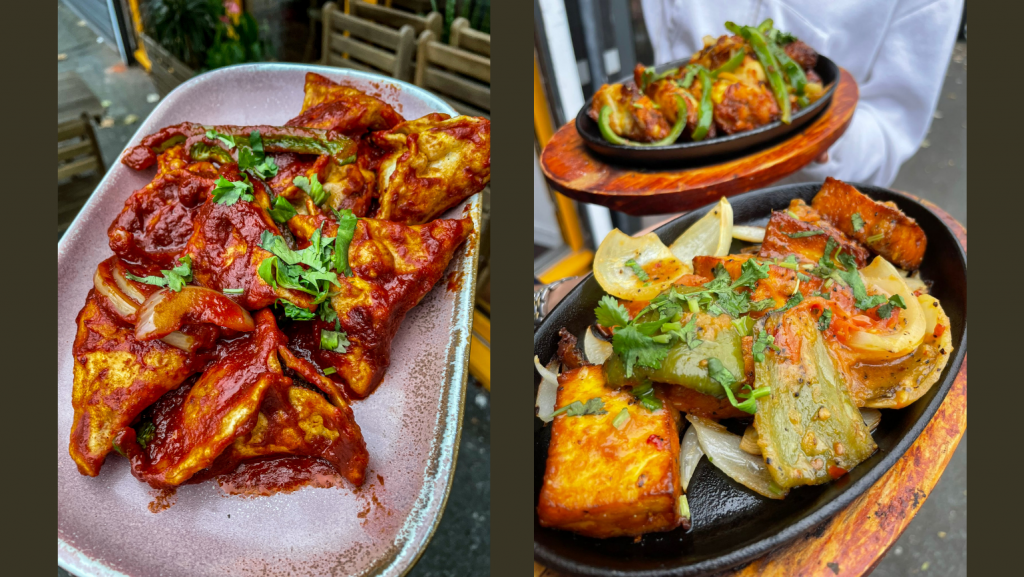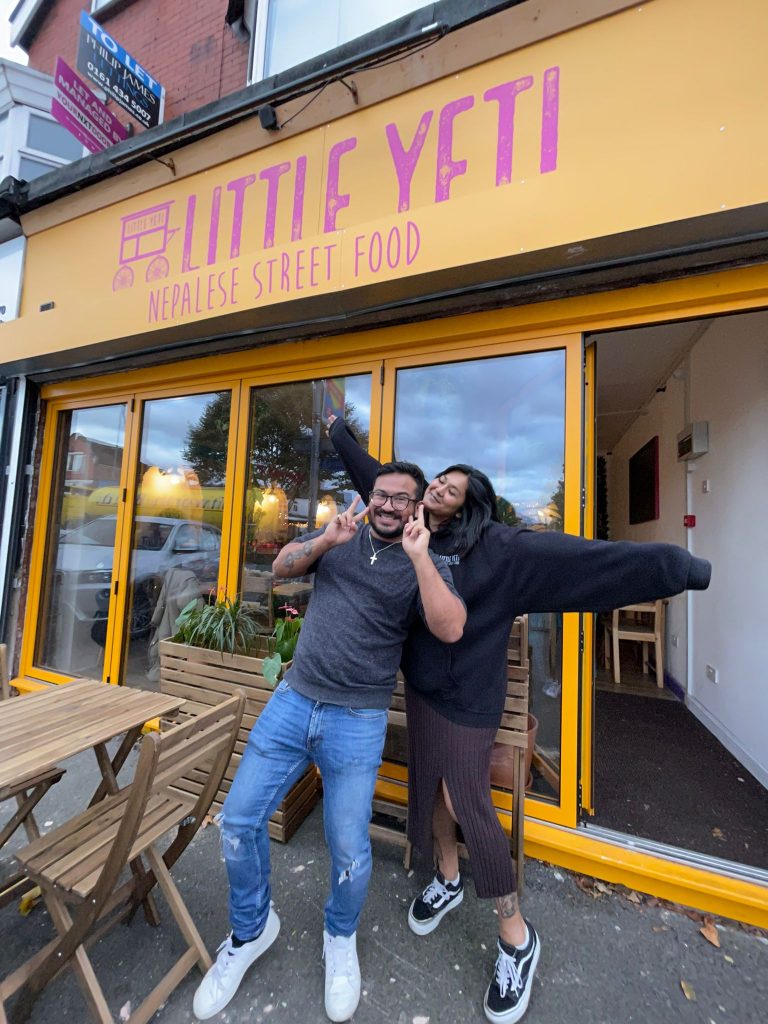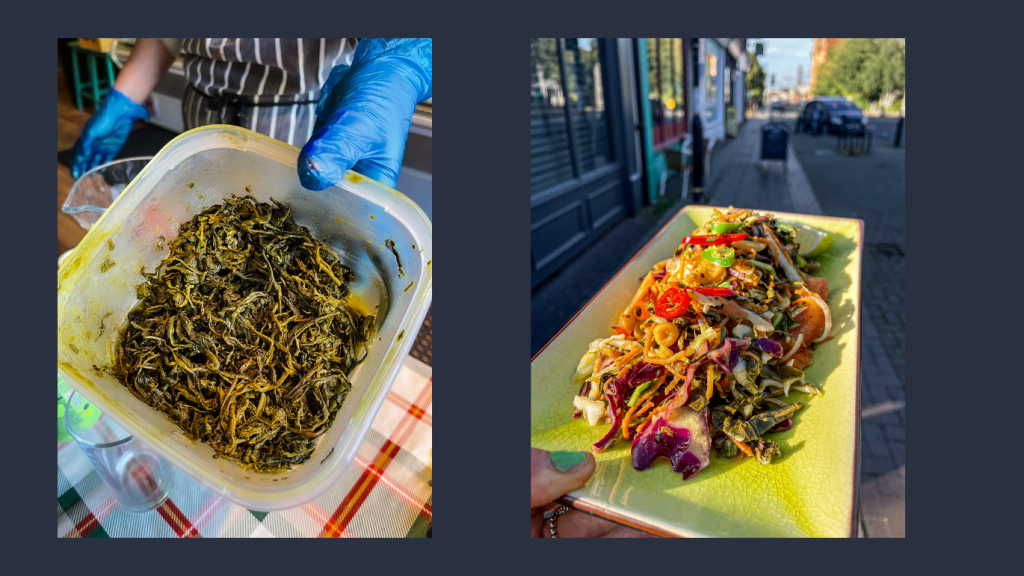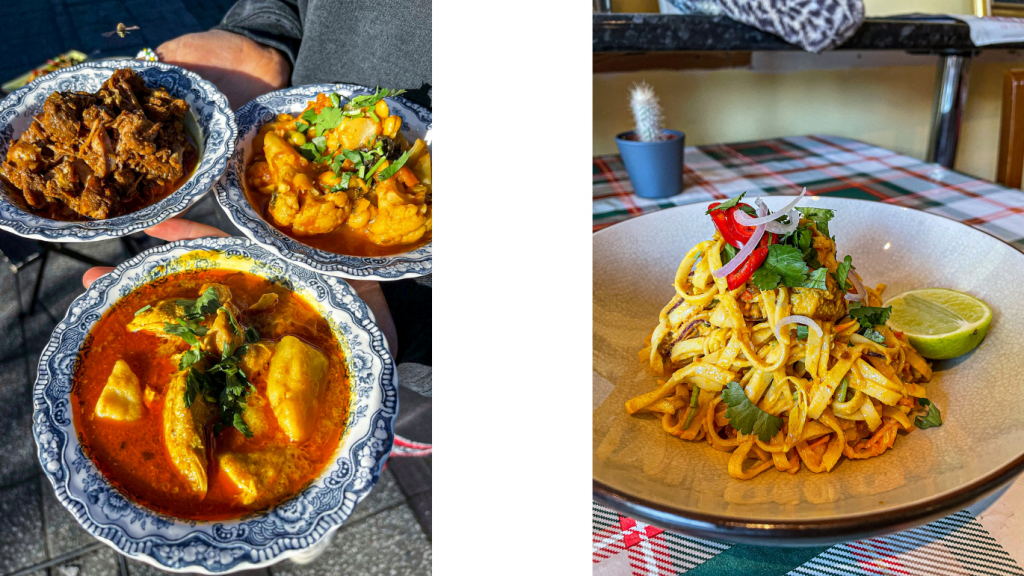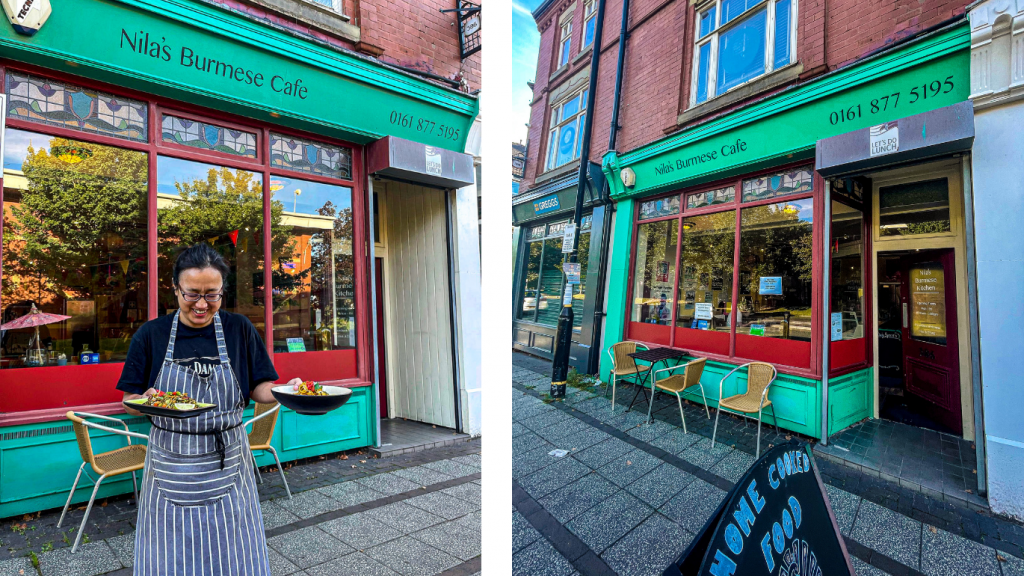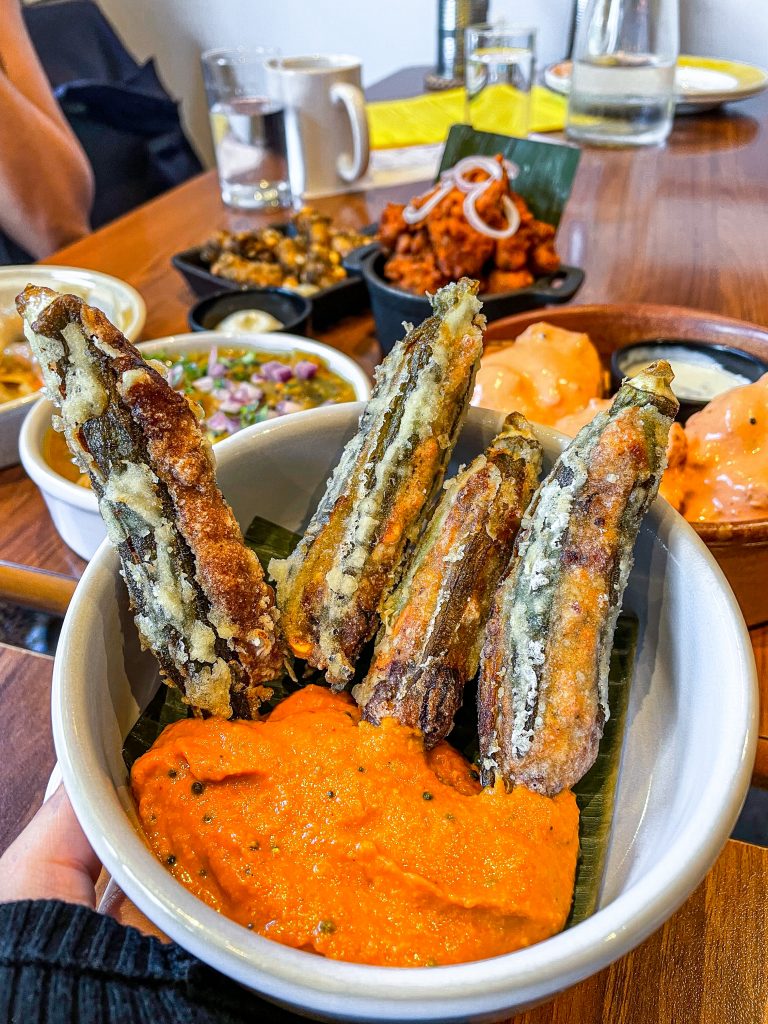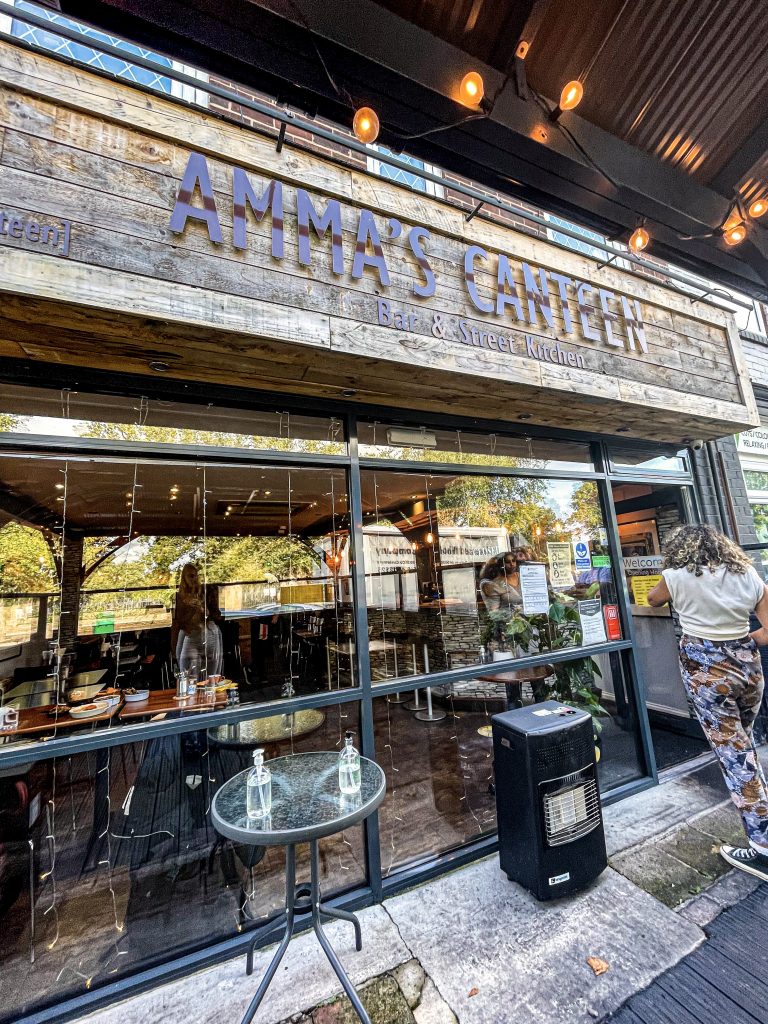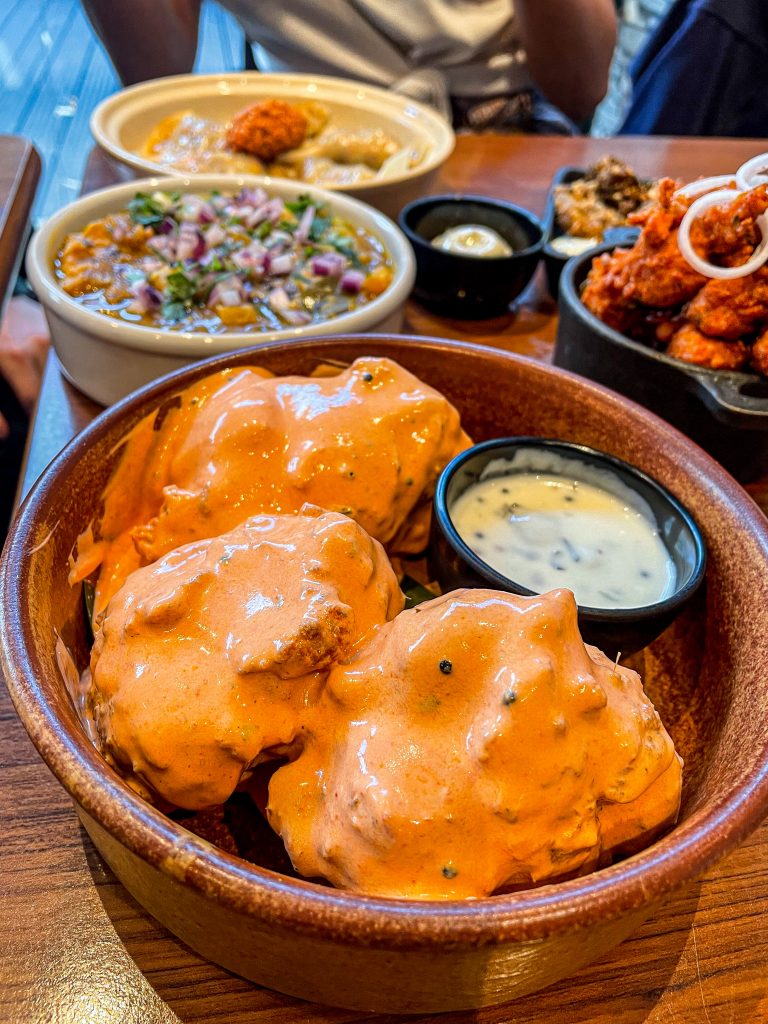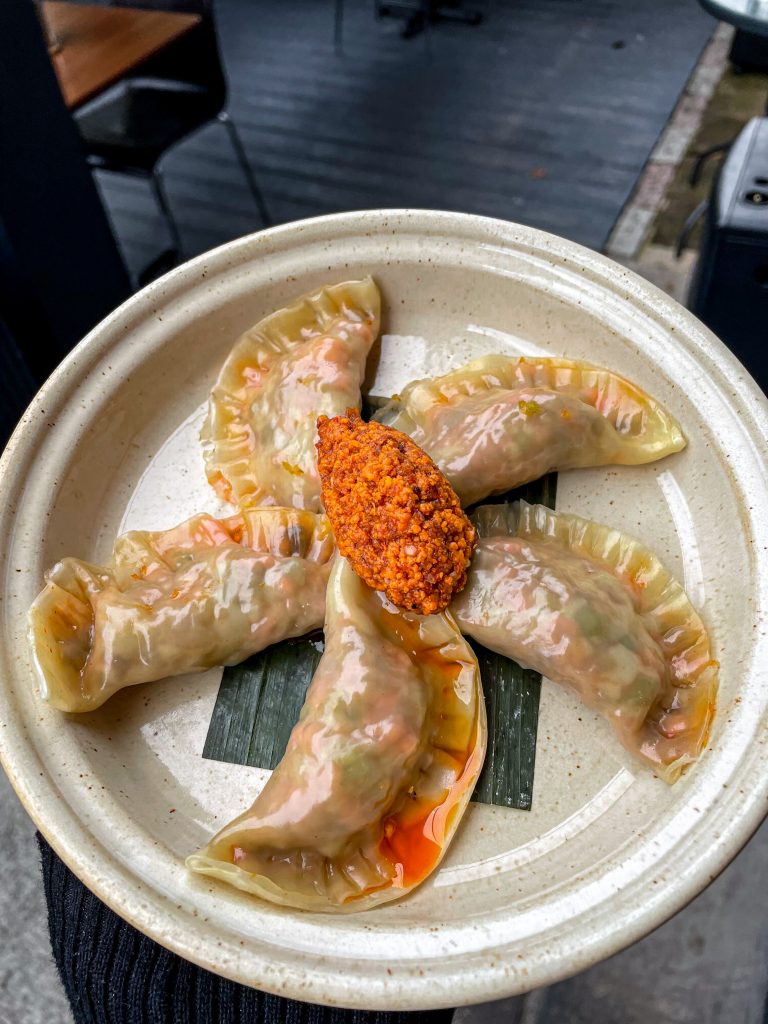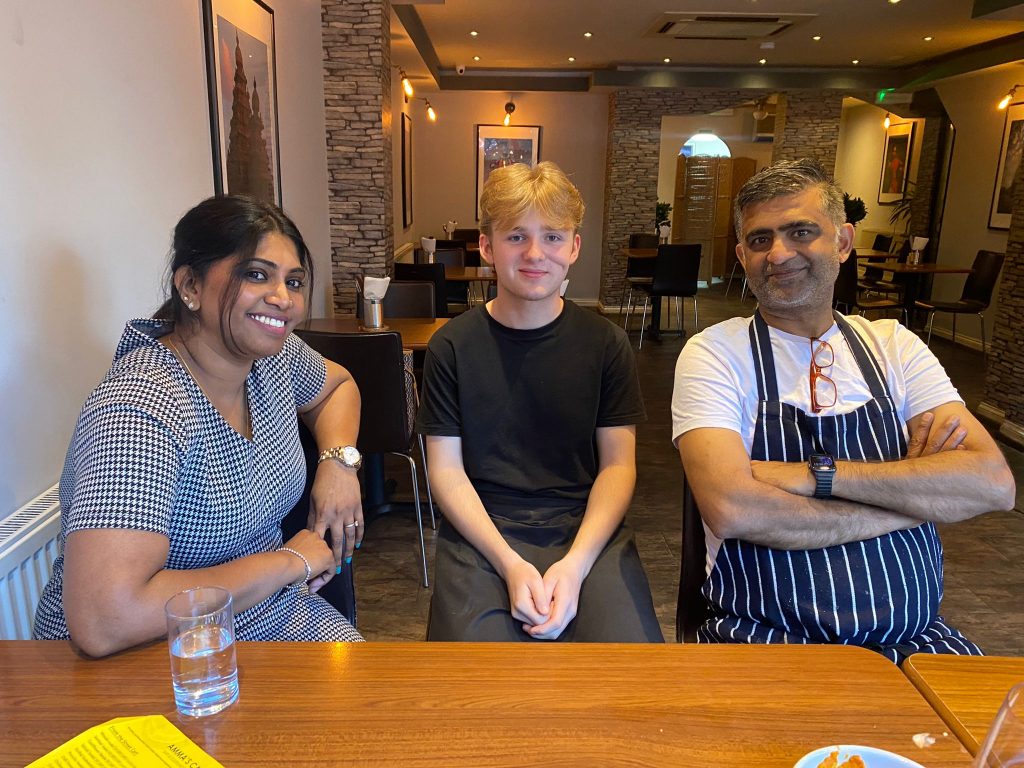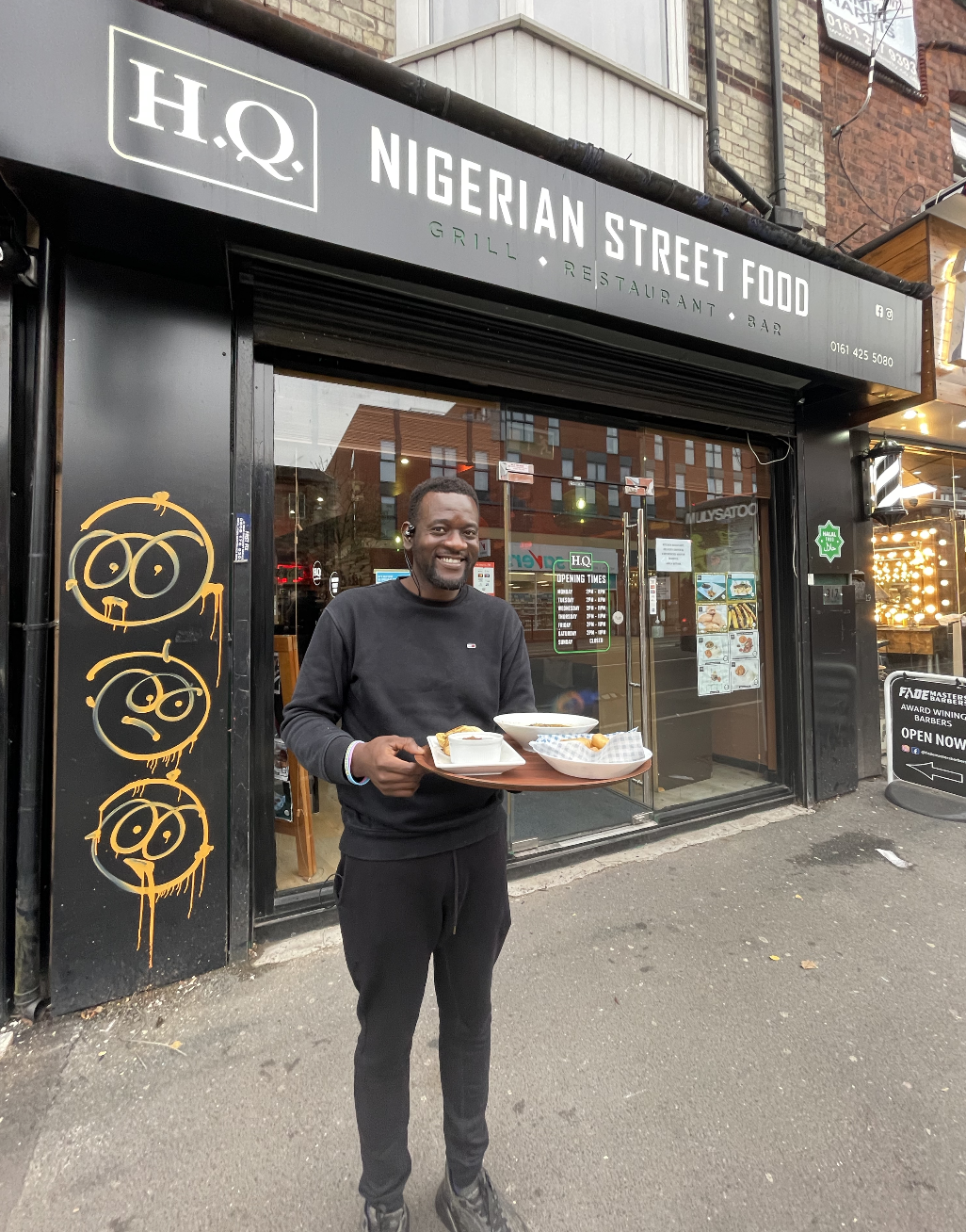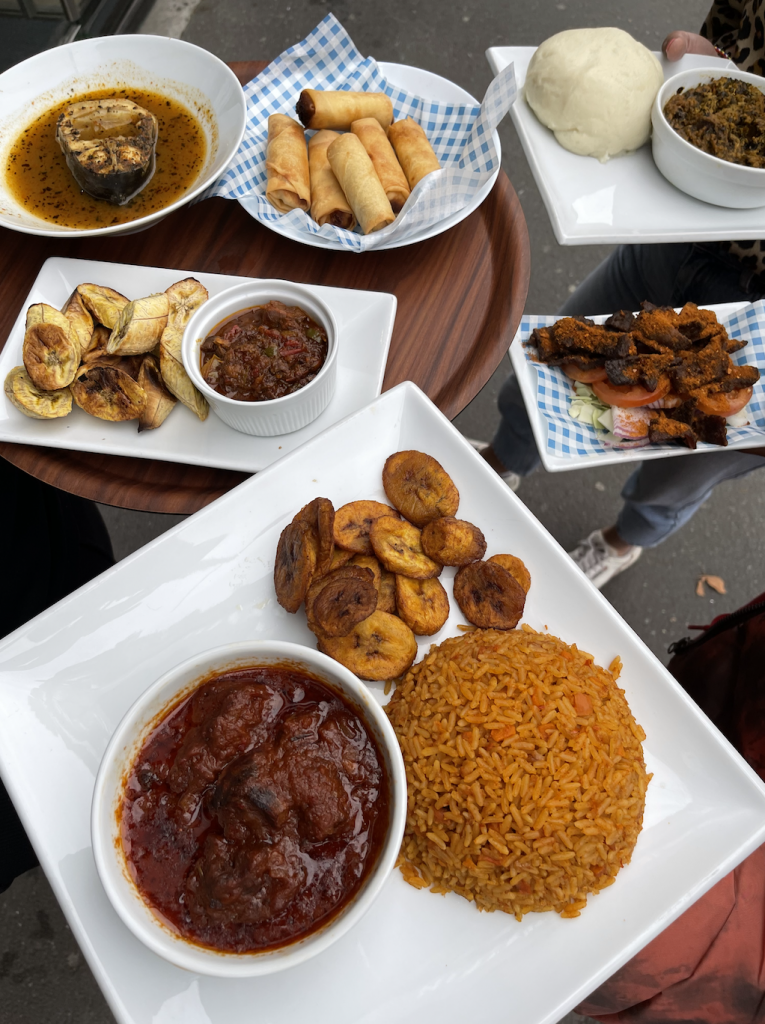To say they opened only 7 months ago, Soul n Surf on Great Ancoats street is already causing quite the stir. You’d be forgiven for thinking their Instagram account is shared by two different venues, as they go from chilled brunch to serious club scenes. It’s a vibe and it’s all down to partners Titi, Ayo and Ben – not to mention the brains behind the brunch, manager Billie.
I sat down with Billie and Titi – who’s head chef, as well as co-founder. We friggin LOVE a woman in charge so it was great to hear about her journey and how the fusion of West African and Soul Food from America’s deep south, came to be.
Titi, who – “I started over lockdown doing catering from my home, serving seafood on a tray.” I realised that there was a demand for this kind of food and people were surprised, saying ‘I didn’t know you could have Jollof rice and lobster’ so it was different.
The concept, Titi explains, is that you can have traditional Nigerian food, “and it doesn’t have to be native, but it can be modern. Anyone that walks in can enjoy our food. It’s for everybody.”
When I tell you the way Soul n Surf is multi-faceted, what they’ve done with the limited space they have is a madness. The site now occupies what used to be Soul Coffee, but you wouldn’t know it.
Thev’ve added a bar, social seating and a huge mural celebrating black excellence – from Wizkid to Whitney, Anthony Joshua to Aretha – and a less-melanated Aitch makes an appearance, in homage to Manchester’s greats. Titi says, “it represents us – my age group, my race.” It’s a place that is vibrant, welcoming – and above all, proud. And that shit’s infectious, you guys.
Now on the food. Demand for Titi’s cooking means she quit her full time job in customer service in banking – so only a slight change. Billie has been in the tight-knit hospitality community since uni, honing in on a love for all things brunch – which is why they hit both mealtimes so well.
Among the waffles and full breakfasts served by day, the Frenchie is a brunch dish that stands out.
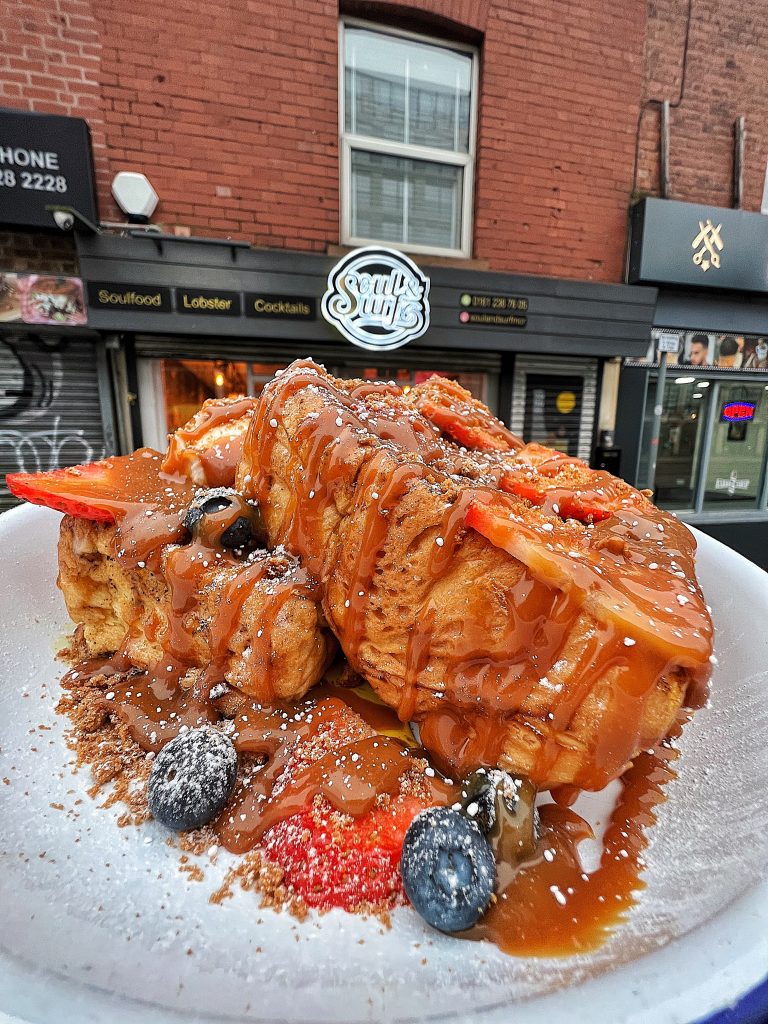
Processed with VSCO with hb2 preset 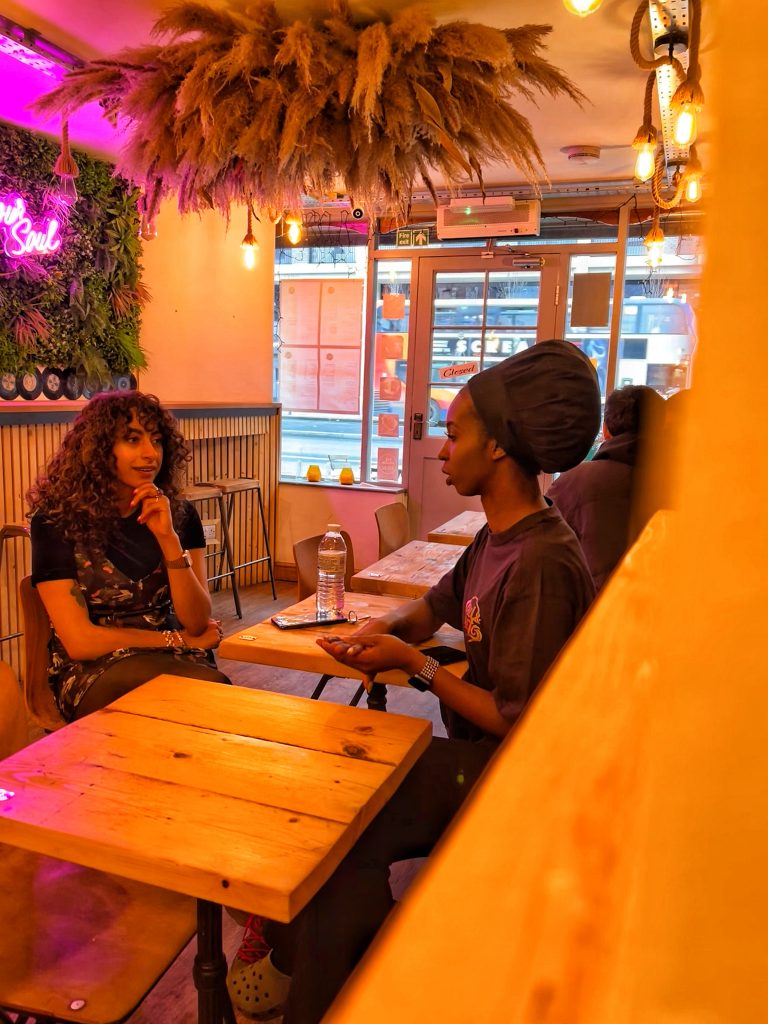
Pillowy, thick slices of fried brioche with a sugared crust that is just 👌🏾 this slab of perfection is then drizzled with caramel sauce, biscoff, strawberries and blueberries, golden syrup, and vanilla mascarpone. Beaut.
If you’re okay with eating two meals in one venue with a five-figure combined calorie count, then stay on for the Soul platter, where you’ll be greeted with all the gifts: crispy chicken wings and king prawns that are sweet and spicy; buttery, garlicky lobster tail; your choice of fried rice or jollof rice (which Titi makes with veggie stock so you’re good) and sides like mac ‘n’ cheese. Holy hell.
Billie describes soul food as, “food that makes you feel warm, full and happy. It’s not particularly healthy-” -but literally, who cares? This is a place to indulge in every sense. Undo your belt, let loose and join the party. Soul n Surf are the neighbours we all wish we had.
Go down and show them some love.
HEIDI’S NOTE:
The expression “soul food” originated in the mid-1960s, when “soul” was a common word used to describe black American culture. It came about after the Great Migration of 1920s when black communities uprooted and left their homes in the south due to the rise of racial intolerance moving to North and West-America.
Adrian E. Miller, who wrote Soul Food: The Surprising Story of an American Cuisine, One Plate at a Time, discusses the origins of soul food in this Epicurious article. It’s 2022 and surface tokenism won’t fly; if we’re going to enjoy the food – we have a responsibility to educate ourselves on the culture and what came before, right?
